Mark Scott Smith's Blog: Enemy in the Mirror, page 88
August 28, 2017
Operation Downfall Japan


Operation Downfall, the proposed Allied plan for the invasion of Japan, would have been the largest amphibious operation in history. It was planned in two phases on the few beaches that were adequate for a massive landing force:
Operation Olympic , to be launched from Okinawa in November 1945, would capture the southern third of the island Kyūshū, which could then be used as a base for air attacks on other targets in Japan.
Operation Coronet would be launched in the spring of 1946 near Tokyo, on the island of Honshu.
The Japanese reportedly planned expending the majority of their defensive efforts on the island of Kyūshū, leaving little reserve for other operations.
Some American military planners advocated the use of chemical weapons in the invasion of japan – although it had been outlawed by the Geneva Convention, neither the U.S. nor Japan had signed the agreement.

Casualty predictions varied widely, but were extremely high and dependent on the level of resistance by Japanese civilians.
The U.S. Joint Chiefs of Staff estimated that casualties from Operation Olympic would cost ~456,000 men, including 109,000 killed. With the addition of Operation Coronet, the estimate was 1.2 million casualties, with 267,000 deaths.
Admiral Chester Nimitz staff calculated that America would suffer 49,000 in the first 30 days of the invasion
General Douglas MacArthur’s staff estimated ~125,000 casualties after 120 days
General George Marshall estimated 31,000 in 30 days after landing in Kyushu
Admiral William Leahy estimated that the invasion would cost 268,000 casualties
U.S. Navy Department estimated that the total losses to America would be between 1.7 and 4 million with 400,000 to 800,000 deaths. They also estimated ~10 million Japanese casualties
The post Operation Downfall Japan appeared first on Enemy in the Mirror.
August 24, 2017
Post-War Germany 1945
23 May, 1945 — President of Germany Karl Dönitz and Chancellor of Germany Count Lutz Graf Schwerin von Krosigk are arrested by British forces at Flensburg. They are respectively the last German Head of state and Head of government until 1949.
23 May- Heinrich Himmler, former head of the Nazi SS, commits suicide in British custody.
24 May – Field marshal Robert Ritter von Greim commander of the Luftwaffe in the last days of the Third Reich, commits suicide.
29 May- German communists, led by Walther Ulbricht, arrive in Berlin.
5 June- The Allied Control Council, military occupation governing body of Germany, formally takes power.
1 July – Germany is divided between the Allied occupation forces.
Source: Wikipedia

This cynical training film for American occupation forces reflects the bitterness and suspicion felt at the end of the war with Nazi Germany.
The post Post-War Germany 1945 appeared first on Enemy in the Mirror.
August 21, 2017
V-2 to Apollo – Wernher von Braun

The German rocket scientist Wernher von Braun was a complex character. Fascinated by astronomy since childhood, he studied at the Technische Hochschule Berlin and the Friedrich-Wilhelms-Universität in Berlin, receiving a bachelor’s degree in mechanical engineering and a Ph.D. physics.
Joining the Nazi party in 1937, von Braun rose to spearhead Hitler’s ballistic missile program. Although he later claimed that joining was merely a means to the end of obtaining his career goals, von Braun rose in the ranks of the infamous Schützstaffel (SS) during the war with three promotions from Gestapo Chief Heinrich Himmler.
Recognizing its value as a weapon of terror, Hitler deployed von Braun’s long-range V-2 rockets developed at Peenemünde against Antwerp and London in 1944 to kill ~2400 people.
At the end of the war, von Braun, along with his rocket team, was secretly moved to the United States in Operation Paperclip. Becoming a U.S. citizen in 1952, he was named technical director of the U.S. Army guided missile project in Alabama known as the Redstone Arsenal. Working with Dr. William H. Pickering and Dr. James A. van Allen, von Braun developed the Juno-I booster rocket that launched America’s first earth satellite Explorer I in 1958. Additionally, he developed the Jupiter Intermediate Range Ballistic Missile (IRBM), and the Pershing missile.
As director of the National Aeronautics and Space Administration’s Marshall Space Flight Center, from 1960 to 1970, von Braun developed the Saturn IB and Saturn V space vehicles and the Saturn I rocket that powered the Apollo 8 that orbited the moon on Christmas Eve 1969.

In 1972, von Braun was named vice president of the aerospace company Fairchild Industries. Several years later he founded the National Space Institute which was designed to gain public support for space exploration. Werner von Braun died in 1977.
The post V-2 to Apollo – Wernher von Braun appeared first on Enemy in the Mirror.
August 17, 2017
Okinawa Falls- May 1945
For the Japanese, Okinawa was the last stepping stone before the invasion of the main islands of the Empire of Japan. The ferocious Battle of Okinawa lasted 82 days. Many analysts believe that Japanese military leaders, realizing the war was lost, hoped to inflict such heavy casualties on Allied forces that a negotiated peace would seem preferable to a bloody invasion of the home islands.
Instead of attacking, Japanese forces focused on defensive maneuvers that resulted in many casualties for the American invaders. Using pillboxes, caves, and ancient castles, they deployed a series of defense lines across the island which they were able to maintain for many weeks. With the addition of multiple Kamikaze air attacks, the Battle of Okinawa was one of the bloodiest and most difficult of the entire Pacific campaign. And, since the island was heavily-populated, civilian casualties soared to ~100,000 ( a level approximately the same as the Japanese army).
Although the island was declared “secure” by American forces on June 21, 1945, many Japanese troops continued fighting. During “mop-up” operations, 8,975 Japanese soldiers were killed.


Battle of Okinawa Statistics
Americans: Marines go North to secure the mountains, Army goes South to capture Shuri and Naha.
Of the 400,000 Okinawans who lived on Okinawa at the time of the Battle, 150,000+ were lost or killed.
AMERICAN INVASION FORCES
Area Commander: Admiral Chester Nimitz
Commander, Division Force: Admiral Raymond Spruance
C.G., 10th Army: LtGen Simon Bolivar Buckner, Jr.
10TH ARMY COMPONENTS
XXIV CORPS
7th Division
96th Division
27th Division (later)
77th Division (later)
III AMPHIBIOUS CORPS
1st Marine Division
6th Marine Division
2nd Marine Division
CASUALTIES
Killed: 12,250
Wounded: 36,361
30 Ships Sunk
223 Ships Damaged
JAPANESE DEFENSES
C.G. LtGen Mitsuro Ushijima
C.G. LtGen Isamu Cho
Sr. Operations Officer: Col. Hiromichi Yahara
32ND ARMY COMPONENTS
62nd Imperial Infantry Division
24th Imperial Infantry Division
NAVAL FORCES
44th Independant Mixed Brigade
Kamikaze Planes
TACTICAL OBJECTIVE
Destroy U.S. 10th Army
STRATEGIC OBJECTIVE
Cripple U.S. Navy
GOALS
Prevent invasion of mainland Japan
CASUALTIES
Killed: 109,629 (estimate)
POWs: 7,821
Yamato (ship) sunk; 3,500 kamikazes destroyed
The post Okinawa Falls- May 1945 appeared first on Enemy in the Mirror.
August 14, 2017
Nazi Germany Surrenders – May 7, 1945
On 20 April 1945, as the Nazi regime collapsed around him, Hitler appointed Grössadmiral Karl Dönitz as his successor, President of the Reich, Minister of War and Supreme Commander of the armed forces. After Hitler’s suicide on 30 April, Dönitz began negotiations for surrender with the Allies.
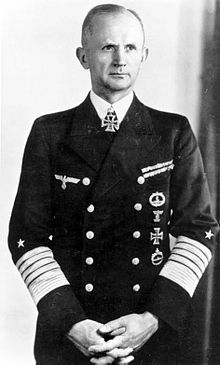
Grössadmiral Karl Dönitz
As Nazi troops were being defeated in Berlin and throughout Germany, Dönitz was forced to accept the terms of unconditional surrender. On May 6th he ordered Wehrmacht Chief of Staff General Alfred Jodl to represent him at the signing ceremony in General Dwight Eisenhower’s temporary schoolhouse headquarters in Reims France.
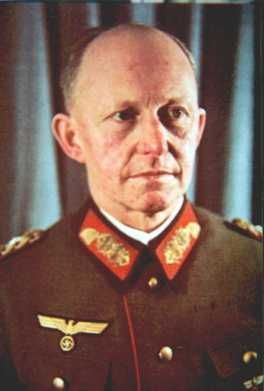
General Alfred Jodl
For protocol reasons, Eisenhower remained in a nearby room and did not attend the ceremony.

General Dwight D. Eisenhower
Lieutenant General Walter Bedell Smith represented Eisenhower in the ‘war room’.
 Lieutenant General Walter Bedell Smith
Lieutenant General Walter Bedell Smith
After an interpreter read the terms of surrender, General Jodl addressed those in the room:
“I want to say a word. With this signature the German people and the German armed forces are for better or worse delivered into the victor’s hands. In this war, which has lasted more than five years, they both have achieved and suffered more than perhaps any other people in the world. In this hour I can only express the hope that the victor will treat them with generosity.”
No one answered nor saluted Jodl. After the Germans left the room, those remaining in the ‘war room’ drank champagne from mess tins.

The post Nazi Germany Surrenders – May 7, 1945 appeared first on Enemy in the Mirror.
August 10, 2017
Ezra Pound Arrested 1945
Ezra Weston Loomis Pond (1885 – 1972) was one of the most controversial, major literary figures in the 20th century. Early in his career, Pound promoted Imagism, a modernist movement, derived from classical Chinese and Japanese poetry, that emphasized clarity, precision and economy of language.
The tree has entered my hands,
The sap has ascended my arms,
The tree has grown in my breast –
Downward,
The branches grow out of me, like arms.
Tree you are,
Moss you are,
You are violets with wind above them.
A child – so high – you are,
And all this is folly to the world.
Ezra Pound
Throughout his career, Pound was devoted to advancing the art of poetry and maintaining his aesthetic standards in the midst of extreme adversity. Additionally, he strived to promote many other writers (including T.S. Eliot, James Joyce. D.H. Lawrence, Robert Frost and Ernest Hemingway).
His best-known works include Ripostes (1912), Hugh Selwyn Mauberley (1920) and the unfinished epic, The Cantos (1917–1969).
Pound moved to fascist Italy in 1925 and became attracted to the energy and promises of monetary reform by the dictator Benito Mussolini. During WWII he remained in Italy and broadcast a series of controversial radio commentaries that attacked Franklin Roosevelt and Jewish bankers that he (and Adolf Hitler) held responsible for the war. In May 1945 he was imprisoned by the U.S. Army in an outdoor cage (illuminated at night with floodlights) near Pisa, Italy.
Eventually judged to be mentally incompetent, Pound was committed to St. Elizabeth’s Hospital in Washington, D.C. After Robert Frost led a successful effort to free him in 1958, Pound returned to Italy where he lived the rest of his life.
Ironically, while imprisoned in Italy, Pound completed the highly-acclaimed “Pisan Cantos,” that won the Bollingen Prize for Poetry in 1949.
What thou lovest well remains,
the rest is dross
What thou lov’st well shall not be reft from thee
What thou lov’st well is thy true heritage
Excerpt from The Pisan Cantos
The post Ezra Pound Arrested 1945 appeared first on Enemy in the Mirror.
August 7, 2017
Marriage & Death of Adolf Hitler – April 1945
For ~12 years, Adolf Hitler tried to keep his relationship with his mistress Eva Braun a secret. His personal valet Heinz Linge reported that Hitler once said: “Fräulein Braun is … too young to be the wife of one in my position. But she is the only girl for me. So we live as we do. But one day…” On April 29, the day before their double suicide, Hitler married Eva Braun.
On April 30, 1945, both Hitler and his new wife Eva swallowed cyanide capsules after testing their efficacy on his beloved dog Blondi. Hitler then shot himself with his 7.65 mm Walther pistol.
Their bodies were cremated in the chancellery garden and reportedly later recovered in part by Russian troops. Despite many conspiracy theories (perhaps some promoted by Stalin) and claims that Hitler had actually survived somehow, in 1956 a German court finally officially declared Hitler dead.
The post Marriage & Death of Adolf Hitler – April 1945 appeared first on Enemy in the Mirror.
August 3, 2017
Götterdämmerung – April 1945
In Nordic Mythology Ragnarök refers to a prophesied war among various beings and gods that ultimately results in the destruction and renewal of the world. In Richard Wagner’s four opera adaptation of Nordic myth Ring des Nibelungen, the final opera was entitled Götterdämmerung (twilight of the Gods). Wagner was one of Adolf Hitler’s favorite composers and his music was performed at many party rallies and functions.
In April 1945, with the Allies closing in on all sides, the Third Reich was in great disarray.
April 23 – Hermann Göring (ensconced in the Obersalzburg in Bavaria) sent a radiogram to Hitler’s Berlin Führerbunker, asking to be declared Hitler’s successor. Although he had issued a secret decree in 1941 naming Göring his successor, Hitler reportedly flew into a rage, convinced that Göring was attempting a coup d’état. Hitler’s personal secretary Martin Bormann then ordered the SS to arrest Göring for treason.
April 28 – Hitler learned that the Reichsführer of the SS and Chief of German Police Heinrich Himmler was attempting to discuss surrender terms with the Allies. He ordered Himmler arrested and his SS aide at the Führerbunker in Berlin shot.
April 1945 – Responsible for carrying out the Demolitions on Reich Territory Decree issued by Hitler in March 1945, Albert Speer convinced Nazi generals and Gauleiters to ignore the order. Later known as the Nero Decree this scorched earth order stated: All military transport and communication facilities, industrial establishments and supply depots, as well as anything else of value within Reich territory, which could in any way be used by the enemy immediately or within the foreseeable future for the prosecution of the war, will be destroyed.
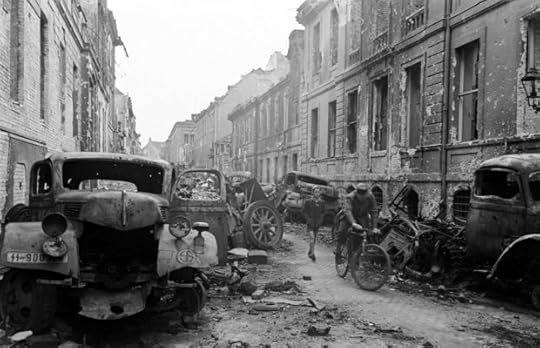
Spring of 1945 Berlin
The post Götterdämmerung – April 1945 appeared first on Enemy in the Mirror.
July 31, 2017
Japanese Hospital Ship Sunk – April 1945
In April 1945, the Awa Maru was a Japanese ocean liner requisitioned by the Imperial Japanese navy, sailing under the protection of the Red Cross with 2004 passengers and crew. After delivering Red Cross supplies to Singapore, the Awa Maru took on stranded merchant marine officers, military personnel, diplomats and civilians and departed for Japan.
In accordance with an agreement with the Allies, the Japanese disclosed the route the ship would take back to Japan from Singapore. Under the 1929 Geneva Convention (which Japan signed but did not ratify) the ship was to be given safe passage through the war zone.

Late on the foggy night of April 1, 1945, the Awa Maru was torpedoed in the Taiwan Strait by the American submarine USS Queenfish (SS-393), which reportedly misidentified the liner as an Imperial Japanese destroyer. All 2,004 passengers and crew, save one, went down with the ship.
Commander Charles Elliott Loughlin of the USS Queenfish was subsequently convicted of negligence in obeying orders and given a Letter of Admonition from the Secretary of the Navy.
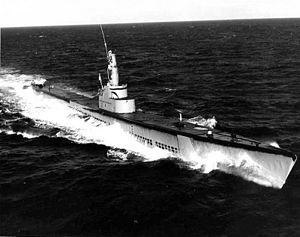
The post Japanese Hospital Ship Sunk – April 1945 appeared first on Enemy in the Mirror.
July 27, 2017
Elbe Day – April 1945
On April 25, 1945, with great jubilation, American and Soviet armies met southwest of Berlin at Torgau on the Elbe River.


Torgau is on the banks of the Elbe in northwestern Saxony, Germany.
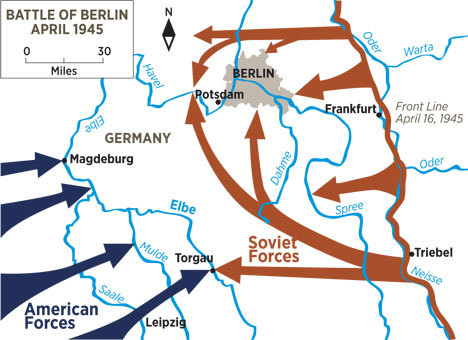
The post Elbe Day – April 1945 appeared first on Enemy in the Mirror.
Enemy in the Mirror
I began by posting events around the turn This website www.enemyinmirror.com explores the consciousness, diplomacy, emotion, prejudice and psychology of 20th Century America and her enemies in wartime.
I began by posting events around the turn of the 20th century as I was researching my first novel about the Pacific War. I continued through WWII for my second novel about the Battle of the Atlantic. Now I am beginning to look at the Cold War as I gather information for my next novel about the Korean War. ...more
- Mark Scott Smith's profile
- 7 followers




